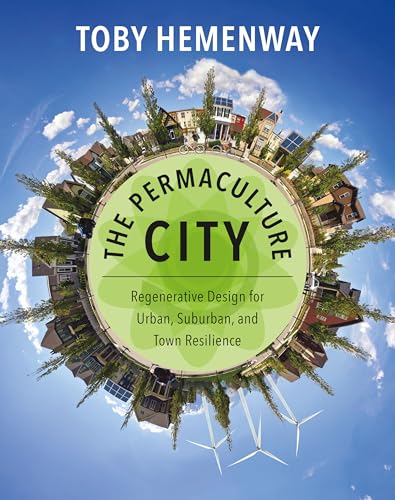The Permaculture City
Regenerative Design for Urban, Suburban, and Town Resilience
Toby Hemenway
BOOK REVIEW

In the bustling world of urban landscapes, where concrete prevails and green spaces diminish like forgotten dreams, The Permaculture City: Regenerative Design for Urban, Suburban, and Town Resilience by Toby Hemenway emerges as a beacon of hope-a manifesto that urges us to reconnect with our environment and reimagine our cities. It is not merely a book; it is a revolutionary call to action, pulling on the strings of our conscience and demanding that we reconsider our relationship with the places we inhabit.
Hemenway expertly weaves the principles of permaculture-designed systems that mimic the natural ecosystems-into the fabric of urban life. This is not just theory; this is a methodical approach to transforming our cities into resilient habitats that can withstand the trials of climate change and urban decay. You will feel a surge of inspiration as you delve into his insights, recognizing that sustainable living doesn't have to be a distant dream but rather an attainable reality within our grasp.
One of the book's most staggering revelations is the concept of regenerative design, igniting a wildfire of excitement about the potential revitalization of neglected urban areas. Hemenway paints a vivid picture of cities that breathe life-a mesh of gardens, renewable energy sources, and community-driven spaces that foster connection and vibrancy. Can you hear the laughter of children playing in community gardens? Feel the camaraderie as neighbors unite to rebuild their local environments? The vision is intoxicating and, above all, urgent.
Toby Hemenway's background plays a pivotal role in shaping his expertise in permaculture. Having dedicated decades to sustainable practices and ecological design, he intimately understands the intricate relationship between the built environment and the natural world. This book draws from a rich tapestry of experiences, innovations, and successes that have emerged from various permaculture projects around the globe. His passion is palpable, etching a profound sense of responsibility into every page. You won't just read his words; you will feel them resonate with your very being.
The discourse is not solely theoretical; it interlaces personal stories and real-world applications, igniting a curiosity that beckons you to consider your own community's potential. Hemenway poses questions that will challenge your perceptions and provoke introspection: How can we, as empowered citizens, reclaim our urban jungles? What small changes could ripple into significant transformations? With this engaging, heartfelt narrative, the book ignites an unquenchable thirst for action, compelling you to begin right where you stand.
This idea of resilience reverberates throughout the text-a resilience that is not just about survival but about thriving amidst chaos. Critics have noted that while Hemenway's enthusiasm may border on idealistic, there's an undeniable practicality to his principles. Opponents may argue about the feasibility of these bold initiatives; however, the testimonials from urban communities that have embraced permaculture speak volumes. Could it be that the challenge lies not in the vision but in our willingness to break from outdated paradigms?
Readers who have embraced Hemenway's vision share transformative experiences-witnessing firsthand how reinvigorated urban landscapes have diminished food deserts and fostered community ties. These voices echo his sentiments, celebrating the newfound spaces where people no longer feel isolated but are interconnected through nature-focused initiatives.
Yet, not everyone is swayed. Some critiques reflect skepticism about whether such sweeping changes can genuinely take root within the entrenched systems of urban governance. There is fierce debate surrounding the practicality of merging profit-driven corporations with the altruistic vision of permaculture. Hemenway, however, meets these challenges head-on. His responses aren't just brush-offs; they are invitations for dialogue, encouraging readers to envision how grassroots movements can influence policy in meaningful ways.
Ultimately, The Permaculture City coaxes you to confront the realities of urban living and, in doing so, kindles a deep-seated flame of hope and motivation. The journey through its pages is enthralling, and as you emerge from Hemenway's insights, a fire will spark within you-the urge to act, to transform, to advocate for a sustainable future in cities that reflect our shared humanity.
Do not let the weight of despair anchor you down. Instead, let this book propel you forward, infusing you with the vivid imagery of verdant cityscapes brimming with life. Security, friendship, sustainability-these are not utopian ideals but tangible goals that can arise from the heart of our cities, if only we dare to dream and, even more, dare to act. 🌱✨️ Dive into this transformative vision, and witness your perspective shift as you reconsider not just the world, but your place within it.
📖 The Permaculture City: Regenerative Design for Urban, Suburban, and Town Resilience
✍ by Toby Hemenway
🧾 288 pages
2015
#permaculture #city #regenerative #design #urban #suburban #town #resilience #toby #hemenway #TobyHemenway